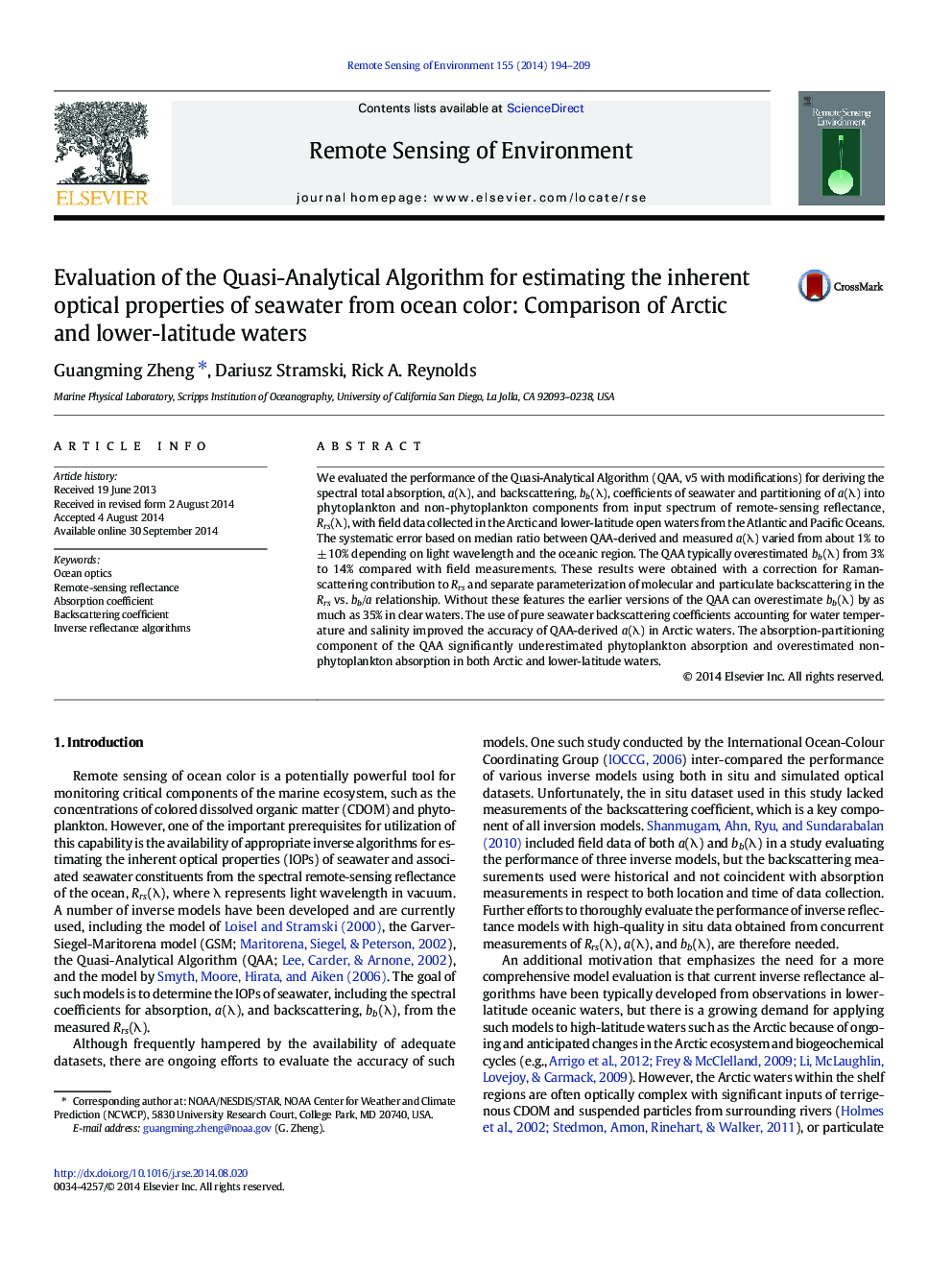| Article ID | Journal | Published Year | Pages | File Type |
|---|---|---|---|---|
| 6346606 | Remote Sensing of Environment | 2014 | 16 Pages |
â¢An inverse ocean reflectance model (QAA) is evaluated with in situ optical data.â¢The absorption coefficient of seawater is derived generally with good accuracy.â¢Performance of different versions of the QAA model is tested.â¢Accounting for Raman scattering in QAA is essential in clear waters.â¢The absorption partitioning part of the QAA shows large systematic errors.
We evaluated the performance of the Quasi-Analytical Algorithm (QAA, v5 with modifications) for deriving the spectral total absorption, a(λ), and backscattering, bb(λ), coefficients of seawater and partitioning of a(λ) into phytoplankton and non-phytoplankton components from input spectrum of remote-sensing reflectance, Rrs(λ), with field data collected in the Arctic and lower-latitude open waters from the Atlantic and Pacific Oceans. The systematic error based on median ratio between QAA-derived and measured a(λ) varied from about 1% to ± 10% depending on light wavelength and the oceanic region. The QAA typically overestimated bb(λ) from 3% to 14% compared with field measurements. These results were obtained with a correction for Raman-scattering contribution to Rrs and separate parameterization of molecular and particulate backscattering in the Rrs vs. bb/a relationship. Without these features the earlier versions of the QAA can overestimate bb(λ) by as much as 35% in clear waters. The use of pure seawater backscattering coefficients accounting for water temperature and salinity improved the accuracy of QAA-derived a(λ) in Arctic waters. The absorption-partitioning component of the QAA significantly underestimated phytoplankton absorption and overestimated non-phytoplankton absorption in both Arctic and lower-latitude waters.
